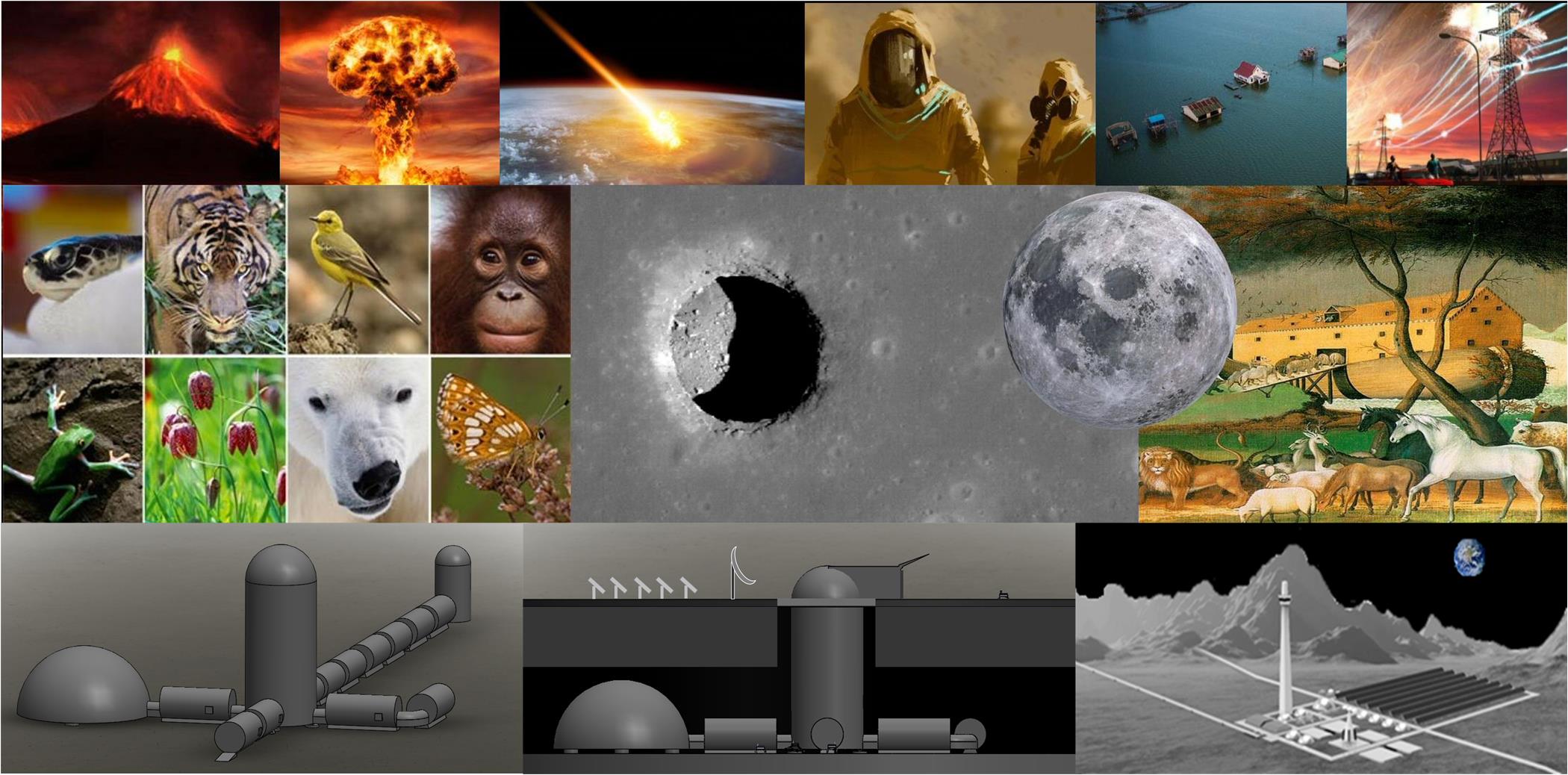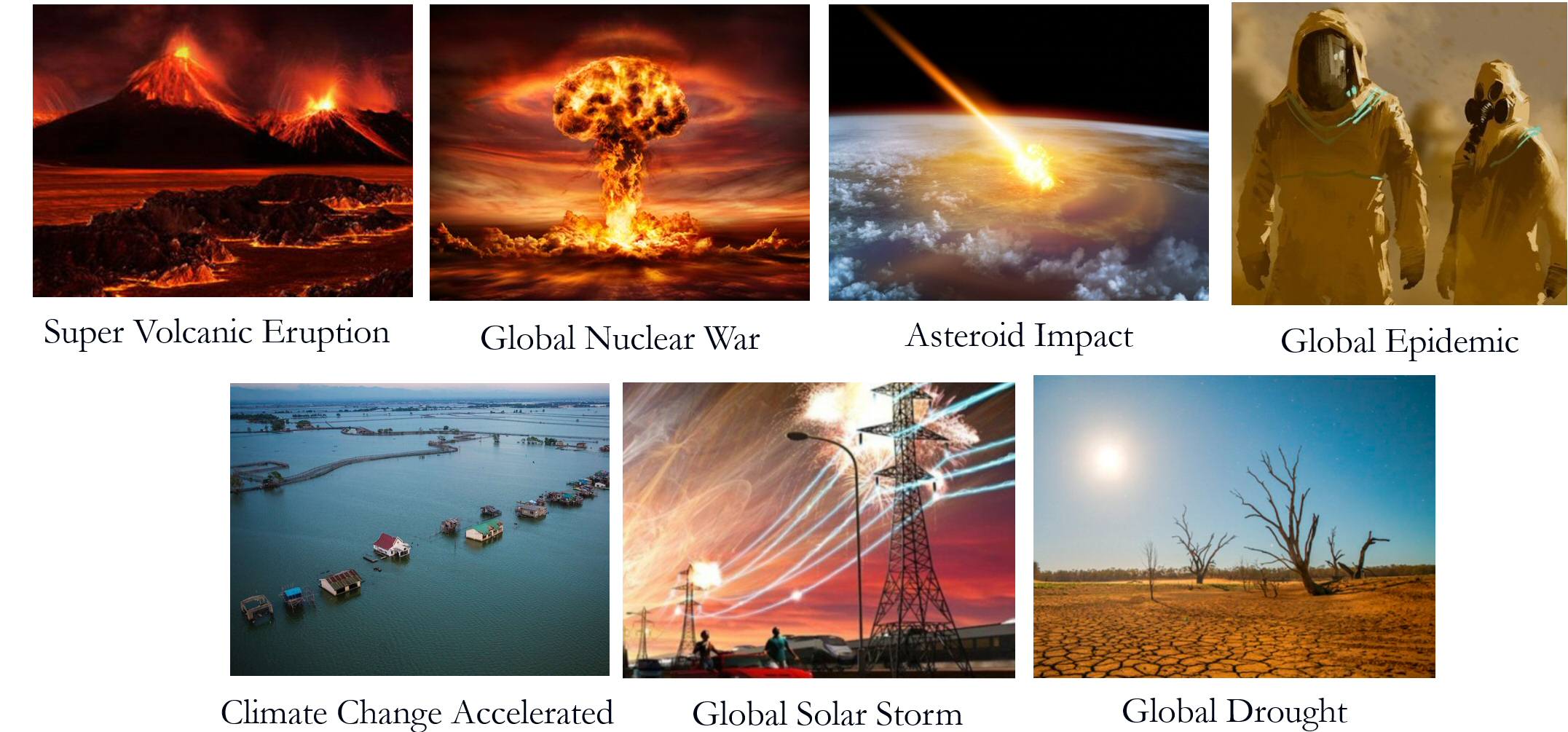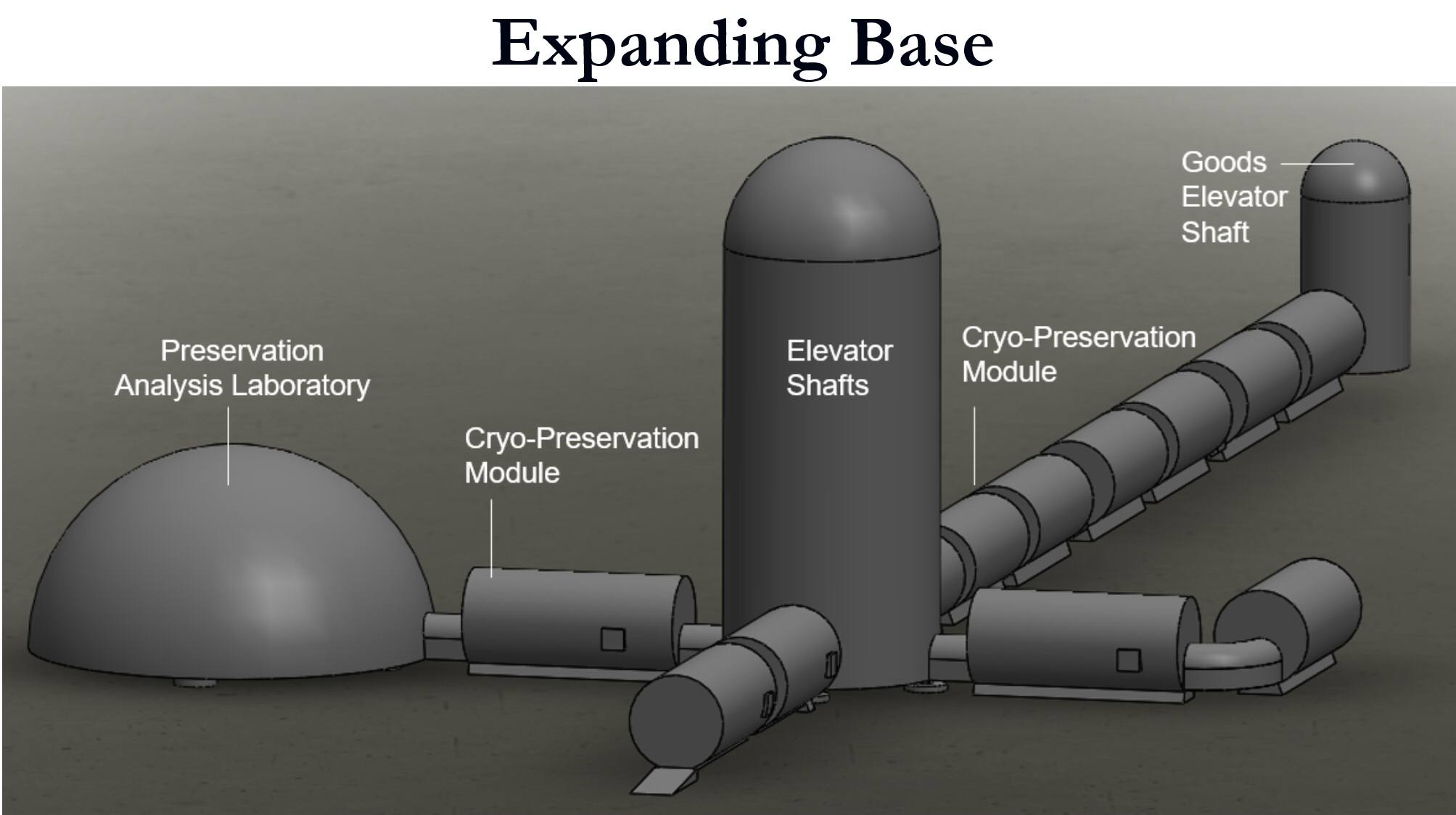Press Release - March 8, 2021 | IEEE Aerospace Paper | Presentation (Youtube)
Sign-Up for the Latest News and Ways to Help the Lunar Ark Project
Background and Needs for a Lunar Ark
SpaceTREx in collaboration with the ASTEROIDS Laboratory has proposed utilization of lunar lava tubes as a modern day "Lunar Ark." These subsurface lava tubes are only 4-5 days journey from Earth and are hypothesized to be pristine for 3-4 billion years. Considering that these lava tubes are nearly 80-100 m below the surface of the Moon, they are ready-made shelter from solar and cosmic radiation, extreme temperature swings, and small meteorite impacts. The lava tubes are thought to stretch at least hundreds of meters to a few kilometers. These shelters could be the ideal location for preserving seeds, spores sperms, eggs, and DNA of Earth's rich biodiversity. We estimate needing to 6.7 million species of plants, animals and fungi species.
Earth faces many dire threats of nuclear war, accelerated climate change, environmental poisoning, and natural disasters such as super-volcanic eruptions, earthquakes, tsunamis, asteroid impacts and solar storms. These threats can topple human civilization and have a major negative cascading effect on the Earth's environment leading to mass-extinctions or even total annihilation. A plan to backup Earth's biodiversity is desperately needed in the event of a major Earthly catastrophe! Without such a backup we move loose some of our rich ecosystems forever and potentially threaten humanity's food supply and its future existence. Humanity as custodians of planet Earth have a unique responsibility to protect Earth and its rich biodiversity. A second factor in backing up Earth's rich biodiversity is in preparation for humanity's quest to colonize and permanently settle off-world environments. Despite our best laid plans, humans alone cannot make this jump, we will need to carry a viable natural ecosystem with us.
Major Announcement: May 3-4, 2021 ( Interplanetary Small Satellite Conference )
1st Lunar Ark Conference: Late-July, 2021 (Biosphere 2 /University of Arizona )
From Dodging Space Threats to Life After a Catastrophe
SpaceTREx Laboratory has been exploring the use of space technology to dodge earthly and space threats, but that alone is insufficient. There is a need for humanity to consider worst case scenarios and develop a logical plan to backup and restore Earth's rich biodiversity both on Earth and future off-world colonies. The lunar lava tubes as discussed earlier could be the ideal shelter to store seeds, spores, sperms, eggs and DNA of 6.7 million Earthly species. SpaceTREx has been developing robotics technologies to explore lunar lava tubes for the past 7 years. This has included development of the SphereX flying, hopping drone and Arne lander concepts (see Arne 2 mission concept below). These lava tubes need to be explored and our hypotheses verified before taking the next steps towards base development. These lunar lava tubes are estimated to be nearly 80 m deep and 80-100 m in diameter. The temperature is expected to be a balmy -25 C. The samples would need to be stored at cryogenic temperatures below -180 C to -196 C. It is possible to store grains, eggs, sperms, and DNA at these cryogenic temperatures without risk of decomposition over many decades, if not centuries.
Arne II mission concept (H.Kalita, M. Robinson, J. Thanga, 2018)
Building Human and Robotic Bases on the Moon
This project extends our earlier concept of building human and robotic bases on the surface of the Moon and in lava tubes. This modern day "Lunar Ark" would be fully operated by robots and operate much like a library. The 6.7 million species would be securely indexed and stored in vaults. Depending on needs, copies of the samples maybe "checked out" for a backup-restore procedure. The Ark is a modular expandable design that could be built entirely on Earth and transported to the Moon or be built in part using lunar in-situ resources. The Ark will be powered using photovoltaics located on the lunar surface. Power will be generated during the lunar day sufficient to keep the Ark refrigerated both during the lunar day and night. These bio-materials will be stored in cassette storage units packaged into rotating shelves. In turn, the shelves will be placed in a modular cylindrical storage room that is 25 m in length and have a diameter of 10 m. Access to these cylindrical storage rooms will be possible using vertical shafts containing elevators constructed into the lunar pits. The vertical shafts will also include laboratories to verify the stored bio-material integrity and prepare for transport back to Earth. A series of mobile robots equipped with 7-DOF robot arms will be used to retrieve and deposit a cassette containing the cryo-preserved bio-material.
Logistics Support Base for Lunar Ark
Plans are already afoot in designing a supporting logistics base that would facilitate restoring of plants, animals and fungi back to Earth. The logistics base would need to replicate stored bio-material and transport them enmasse back to Earth and start a restoration process. Total annihilation of Earth's ecosystem will require a long and ardous restore process. It will be met with many trials and tribulations and likely proceed for hundreds of years. While aspects of the restoration process can be done by robots, we envision requiring a small crew of human custodians to keep the process going over hundreds of years.
How Can We Start Now ?
In this project we are iterating through the design and feasibility of the Lunar Ark concept. We are also working dual-track towards plans to get started in the next 5-8 years by first backing up critical seeds and spores of common plants and crops essential for our food supply. This backup of plants and crops would be equivalent in capability to Svalbard Seed Vault in Norway. Efforts are underway to understand the long-term effects of vacuum, lunar gravity and launch shock/vibration on the health of the seeds and spores. In parallel, separate teams led by SpaceTREx are working on designing the storage containers and transport vehicles to carry both the seeds and spores, in addition to the cryo-preserved bio-matter to the Moon.





